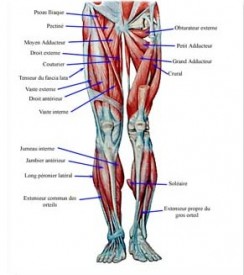 There are four different types of diabetic neuropathy, each having their own distinct symptoms and treatment. Proximal neuropathy symptoms differentiate themselves from the other types in several distinct ways.
There are four different types of diabetic neuropathy, each having their own distinct symptoms and treatment. Proximal neuropathy symptoms differentiate themselves from the other types in several distinct ways.
First, proximal neuropathy affects the functioning of nerves in the buttocks, thighs, and hips rather than affecting the ends of nerves like the more common type of diabetic peripheral neuropathy.
The symptoms are usually sudden and drastic and seemingly appear overnight. In fact, the sufferer can often remember the exact time or day that the painful symptoms first appeared. It feels like a relentless burning or jabbing in the affected area and usually quickly leads the victim to seek out medical care.
The pain is often so intense that it is difficult to sleep, and narcotics are often required to alleviate the pain. Sometimes a person is unable to walk in sometimes even confined to a wheelchair, and the quality of life is significantly reduced.
Secondly, proximal neuropathy usually affects people in middle age or the elderly, and it is much rarer for it to afflict younger people. This differs from peripheral neuropathy which is known to affect people of all ages, although it is still more common with increasing age.
Also, proximal neuropathy is unique in that the pain normally presents itself in an asymmetrical pattern. In other words, it affects one side of the body and not the other, or at least one side much more than the other. This is in direct contrast with peripheral neuropathy which almost always presents itself symmetrically in either the hands or the feet.
Other symptoms include muscle weakness and muscle atrophy. Sufferers often experience lack of muscle coordination and muscle strength, manifesting itself in an inability to rise from a sitting position or perform other common muscular movements. Weight loss and loss of appetite are also common.
The onset of pain is instant and very intense, however, usually peaks after a few weeks to three months, with three months being in the farthest range. Thankfully, during this time the symptoms usually peak and then slowly dissipate.
Diabetic neuropathy is most common among those with diabetes mellitus, or type II diabetes. Proximal neuropathy is quite rare in comparison to peripheral neuropathy as it affects less than one in 100 people with diabetes.
Scientists are unsure of exactly how uncontrolled blood glucose levels affect functioning of the nerves, but they are certain that there is a connection between the two. Proximal diabetic neuropathy is usually reversible after the initial few weeks or months of intense pain.
The best treatment for the disease is tight control blood glucose levels through proper eating habits and nutrition, and medication if necessary, and good physical fitness. Antidepressant and pain medication are common prescriptions for the symptoms of proximal diabetic neuropathy.
Treatment sometimes includes physical therapy which is helpful for reclaiming muscle strength and flexibility. Acupuncture is also sometimes but at this time is still considered an alternative therapy.
The length of time for full recovery varies depending on the type and extent of the nerve damage, and whether or not the patient is able to successfully control his diabetes.
Peripheral Neuropathy Treatment
 |  |  |  |
| Penetrex® | Nerve Support Formula Vitamins | Neuropathy Cream | Neuropathy Rubbing Oil |


Len
This post on Proximal Neuropathy nails it to a “T” what I have been experiencing for the last month and half! I’ve been trying to communicate this to my GP and I just end up drawing a blank. I am a 67 yr old male diagnosed as pre-diabetic with initial symptoms of Peripheral Neuropathy in my feet and legs. My physician assured me my condition wasn’t critical enough with a A1C reading of 5.6 to be overly concerned about it. It was only recently after I started getting symptoms of Proximal Neuropathy that my neurologist suggested that pre-diabetes could be the cause of my problems. After reading this post and a few others on the web, I am convinced this is the issue and I am in the process of making dramatic life style changes in my diet and activities to try and reverse this. Thank you for this information!
HealthClover
Thanks so much for the comment. I experienced a few years ago exactly what you are now. I made dramatic lifestyle changes and was able to reverse my symptoms of peripheral neuropathy. Glad you are able to diagnose the issue so you can now take corrective action. Good luck with your recovery and please let us know what works and what doesn’t for you.
Len
I continue to aggressively address my problem and it seems to be working. I purchased a glucose meter and it is helping me monitor my blood sugar spikes by changing the types of foods I consume, especially with my breakfast. No more sugar and refined carbs and replacing them with healthy carbs (vegetables, some whole grains, fruit in moderation), healthy fats, and protein. Along with that I continue to exercise regularly by walking and doing upper body strength exercises. My neuropathy and discomfort seems to be dissipating bit by bit and I am feeling like my energy levels continue to improve, plus I am sleeping better. I have to remind myself I didn’t get in this state overnight and I am not getting out of it overnight. Thanks again.
HealthClover
Awesome. Glad to hear about all the positive lifestyle changes you have made. You are right: It took years to get to this point, and it will take time for the body to heal. Here’s hoping you continue to see improvement in your symptoms and overall health. 🙂